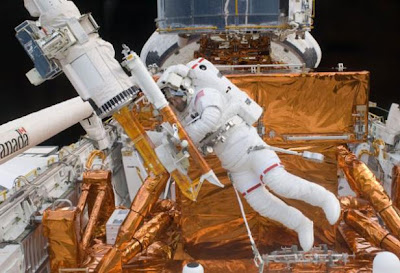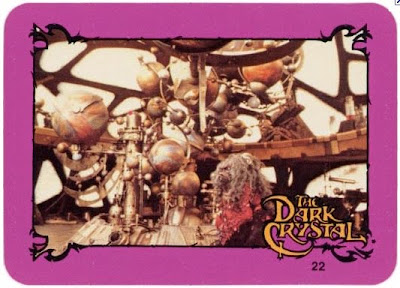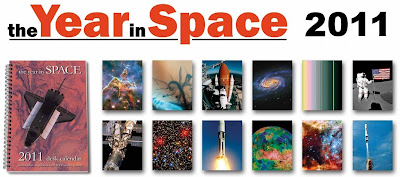
The
China National Space Administration (CNSA) was founded in the 1950s, though their technological development took decades to mature, often in complete secrecy. In October 2003, when taikonaut
Yang Liwei achieved orbit for 21 hours aboard
Shenzhou 5, China became the third nation to send humans into space. Later, in September 2008,
Shenzhou 7 yielded China’s first spacewalk mission, with EVA completed by
Zhai Zhigang and
Liu Boming.

The next planned missions,
Shenzhou 8,
9 and
10, will join together cargo and laboratory modules which will comprise China's first orbital space station.
In a marathon search for all the centers, launch pads and satellite stations (the
CNSA also has a
Deep Space Tracking network very similar to NASA's), coupled with a crash course in Chinese characters, I found a wealth of information about 30 sites of the CNSA.
Although, in the case of the standard characters, if you ask me a few months from now, I will probably only be able to identify the ones for
space and
rocket launch and
budget problems!

Click to see Google MapNote: There are so many markers now, you must scroll down in the
right-hand Navbar, and click each page to see all the additions!
安 徽 广 德 誓 节 渡 中 国 科 学 院 六 ○ 三 基 地 or Guangde Launch Site aka Base 603 (Xuancheng, Anhui)
北 京 航 天 城 or Bejing Space City (Hai Dian Qu, Beijing)
北 京 航 天 指 挥 控 制 中 心 or Beijing Aerospace Command and Control Center(BACCC)(Hai Dian Qu,Beijing)
东 风 航 天 城 or Jiuquan Satellite Launch Center (JSLC), aka Dongfeng Space City, previously known as secret Base 20 and also includes the Dongfeng Tracking Station (Jiuquan, Gansu)
贵 州 航 天 高 新 技 术 产 业 园 or Guizhou Aerospace Industrial Park aka Base 061 (Zunyi, Guizhou)
文 昌 航 天 城 or Wenchang Satellite Launch Center (WSLC), aka Wenchang Space City (Wen Chang Shi, Hainan)
二 十 六 基 地 or Xi'an Satellite Monitor and Control Center (XSCC) aka Base 26 … also includes the Weinan Tracking Station (Weinan, Shaanxi)
太 原 衛 星 發 射 中 心 or Taiyuan Satellite Launch Center (TSLC) aka Base 25 (Xi'an, Shaanxi)
烟 台 航 天 城 or Yantai Space City (Yantai, Shandog)
上 海 航 天 城 or Shanghai Space City (Baoshan, Shanghai)
南汇县老港镇东进村 or Nanhui Launch Site (Jing An Qu, Shanghai)
西 昌 衛 星 發 射 中 or Xichang Satellite Launch Center (XSLC) (Liangshan, Sichuan)

Beijing Aerospace Command & Control Center
甚长基线干涉 or the VLBI: Very Long Baseline Interferometry Radio Antennae- Deep Space Tracking Network #1 - Xuhui, Shanghai
- Deep Space Tracking Network #2 - Beijing
- Deep Space Tracking Network #3 – Kunming
- Deep Space Tracking Network #4 – Urumqi
THE CHINESE TSC NETWORK厦 门 or Xiamen Tracking & Control Station (Xiamen, Fujian)
南 海 区 or Nanhai Tracking & Control Station (Foshan, Guangdong)
佳 木 斯 or Jiamusi Tracking & Control Station (Jiamusi, Heilongjiang)
庐 山 区 or Lushan Tracking & Control Station (Jiujiang, Jiangxi)
长 春 or Changchun Tracking & Control Station (Changchun, Jilin)
青 岛 or Qingdao Tracking & Control Station (Weihai, Shandong)
天 山 区 or Tianshan Tracking & Control Station (Urumuqi, Xinjiang AR)
和 闐 or Hetian Tracking & Control Station (Hetian, Xinjiang Autonomous Region)
沾 益 县 or Zhanyi Tracking & Control Station (Qujing, Yunnan)
INTERNATIONAL OFFICESMalindi International Tracking Station (Malindi District,
Kenya)
Siziwang Banner Manned Spacecraft Landing Site (Wulanhua,
Inner Mongolia)
Swakopmund International Tracking Station (Erongo District,
Namibia)
Karachi International Tracking Station (Province of Sindh,
Pakistan)




































